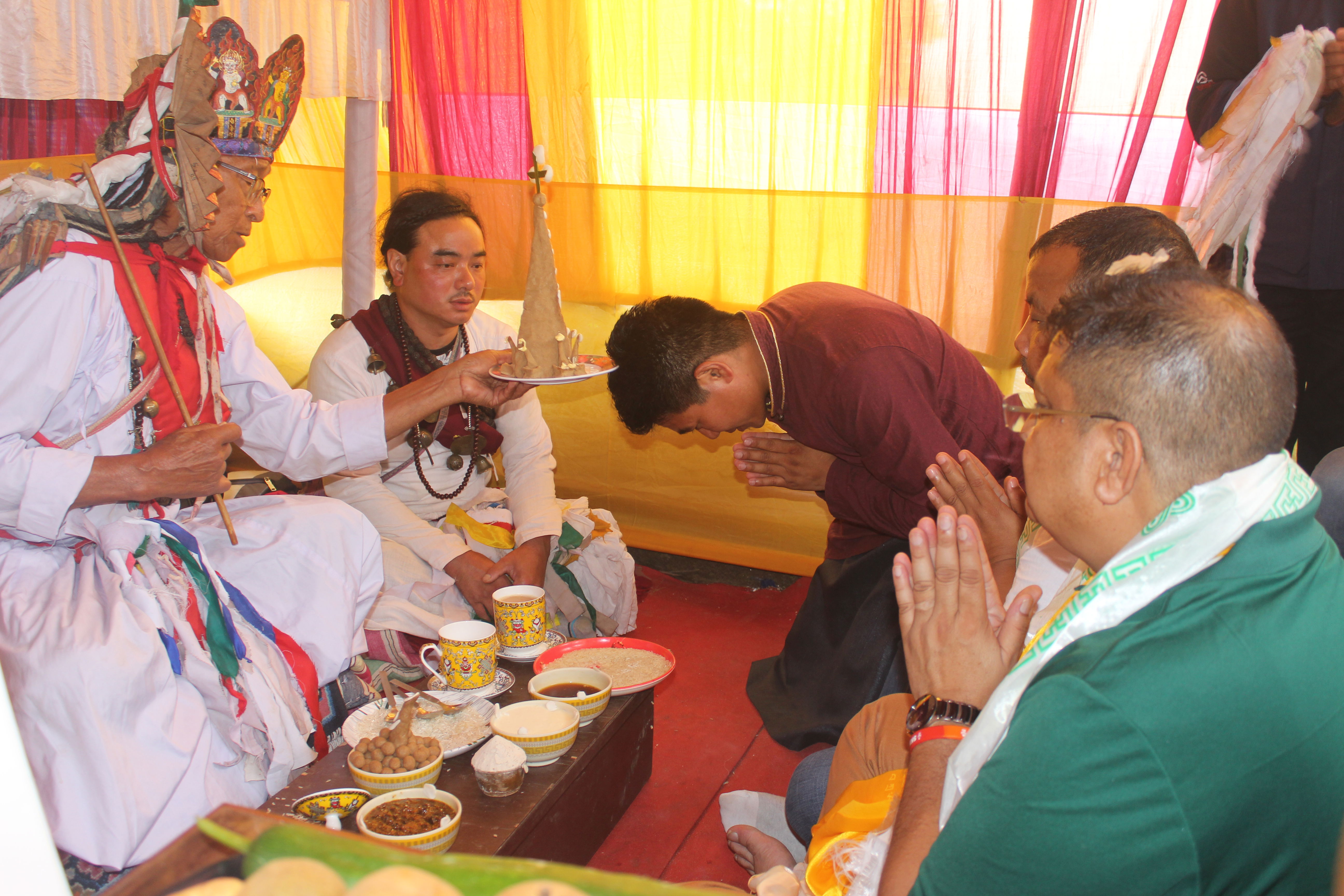
The Sherpa community, an indigenous ethnic group of the Himalayas, has long been intertwined with the natural world. Their connection to nature stems from centuries of survival in the harsh, high-altitude environments of the Himalayas. The Sherpas' spiritual, cultural, and daily practices are deeply shaped by their respect for the environment, with their livelihoods sustained by agriculture, livestock herding, and other nature-dependent activities. Central to their culture is the worship of natural elements, a practice that finds its most expressive form in festivals like the Phag-Nyin or Yar-Nyin, a summer celebration deeply rooted in their tradition and spiritual belief system.

Phag-Nyin, celebrated by Sherpas in Sikkim and around the world, stands as a powerful representation of their reverence for nature. It is a festival of devotion, gratitude, and prayers for the protection of the mountains, rivers, forests, and wildlife that sustain the Sherpa people. The community acknowledges nature not only as a resource but as a sacred entity, intimately linked to their cultural and spiritual identity. Through rituals and offerings, the Sherpas reaffirm their belief in the interdependence of human existence and the natural world, emphasizing the need to live in harmony with nature.
The name "Phag-Nyin" refers to the "Year of the Pig" in the Tibetan zodiac calendar, but the festival is observed even in zodiac years also. Its name ties it to the Sherpa Buddhist calendar, which blends spiritual and natural rhythms. This cultural practice highlights the community's dedication to honoring the earth, with particular attention given to the summer season, considered a sacred time of abundant growth and renewal.

On August 26, 2024, the Phag-Nyin festival was celebrated with unprecedented grandeur at Sherwi Khangba, Perbing, South Sikkim. Organized by the Denzong Sherpa Association (DSA), this event became a landmark moment in Sikkim's cultural history. The event was encouraged by the visionary leadership of the Hon'ble Chief Minister of Sikkim, Shri Prem Singh Tamang (Golay), under the flagship "Sunawlo Ani Samridhi Sikkim", the celebration showcased the community's spiritual and cultural ethos. The festivities were inaugurated by the respected Chief Guest, Shri Sanjeet Kharel, Member of the Legislative Assembly, alongside prominent dignitaries.
At the heart of the celebration was a ritual performed by the revered "Paow," the Sherpa community's spiritual head (Shaman). Rooted in the ancient Bon religion, which predated Buddhism, the Paow's rituals connect the community to ancestral and local deities as well as the natural world. With the chanting of mantras, prayers, and sacred offerings, the Paow served as a mediator between the divine and the community, reinforcing the Sherpa people's spiritual heritage.
The festival also featured traditional Sherpa stalls showcasing the rich cultural heritage of the community. From local food delicacies like Riki Kur (potato pancakes), Chanku (traditional drink), and Goyang (fermented vegetables) to healing medicine exhibits and artifacts, the stalls were a vibrant reflection of Sherpa traditions. The youth contributed to the festivity with lively traditional Sherpa dance performances, bringing the community's cultural history to life.

The event, led by the Denzong Sherpa Association under the guidance of its President, Mr. Dorjee Sherpa Pinasa, sought to promote unity and awareness among the Sherpa people, particularly the younger generation. The DSA emphasized the importance of remaining connected to their heritage and fostering community cohesion. The Phag-Nyin festival highlighted the Sherpa's deep-rooted cultural and spiritual identity while also promoting the preservation of their traditions for future generations. As part of their continued commitment to the Sherpa way of life, the DSA encourages its members to take pride in their cultural identity and to uphold the values of harmony with nature. By doing so, they ensure that the legacy of the Sherpa community will endure, preserving their rich cultural heritage in the face of modern challenges.